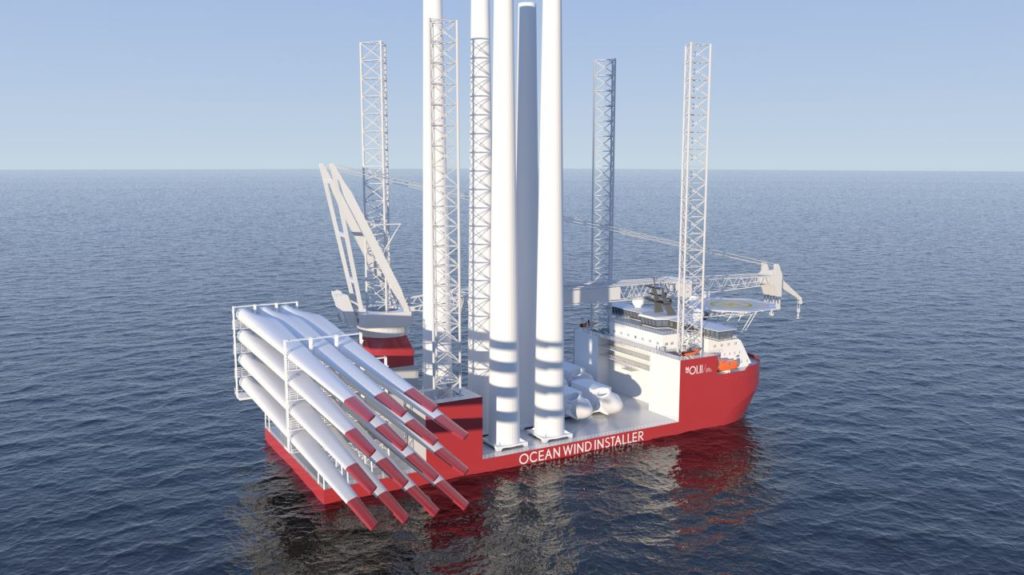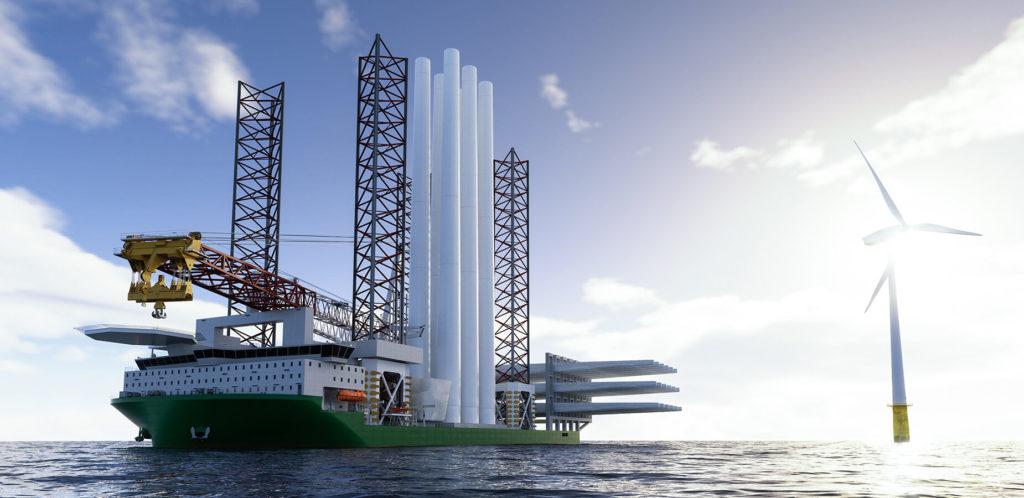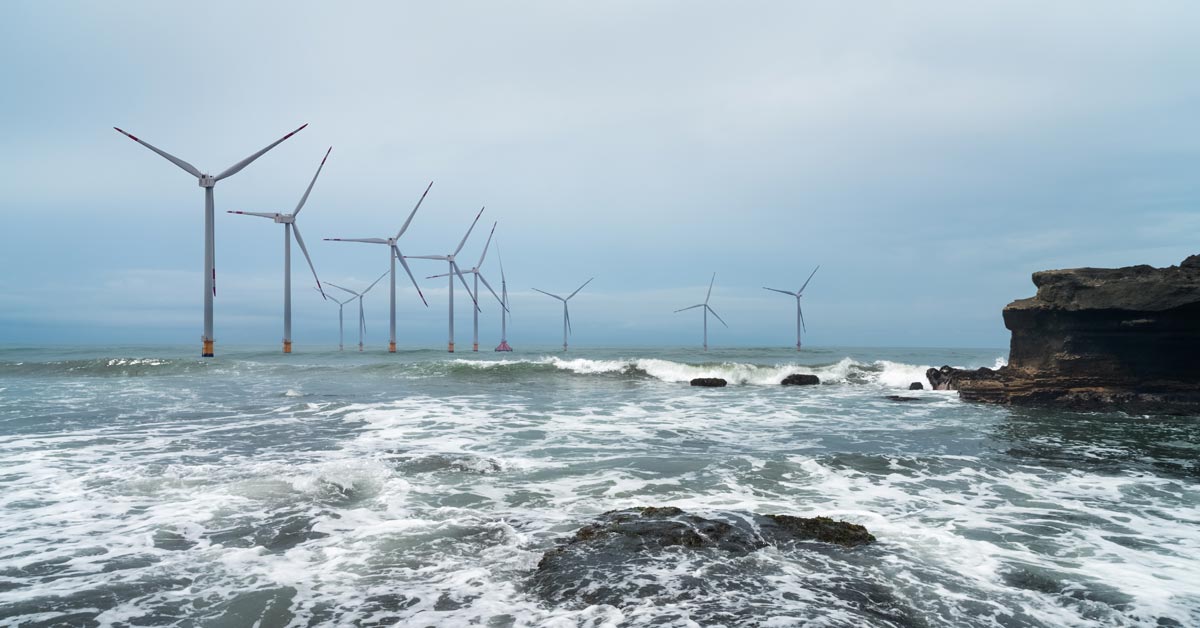Risks Associated with Proliferation of Highly Specialised New Build Offshore Wind Installation Vessels
Daniel.Sim@ccint.co.uk
+44 (0)7730 445 020

Max.Braslavsky@clydeco.com
+44 20 7876 6086

Paul.Lowrie@clydeco.com
+44 20 7276 4435

2021 was a record year for offshore wind installation. Globally, some 53 new windfarms entered operation, adding 15.7GW of capacity. With the offshore wind industry flourishing internationally, the demand for specialist vessels has grown exponentially. That growth has been further necessitated by specific jurisdictional requirements such as the need for Jones Act compliant vessels in the US.
Looking to the future, it is predicted that global offshore wind capacity will reach 270GW by 2030[1] and 1,748GW by 2050.[2] Between now and 2025, the Compound Annual Growth Rate (CAGR) for offshore wind is expected to be 29.3%[3] indicating that the aggressive expansion of this sector is set to continue.
The wind industry’s increasing focus on offshore installations is partly driven by greater freedom of site location, access to higher, less variable wind speeds and less constraint on hub heights. This has accelerated the race for larger turbines to maximise production, with a significant portion of projects now installing the next generation of 14MW+ turbines. Whilst fixed bottom installations are still the most commonly utilised foundations, floating wind is set to flourish in the coming years.
Against the backdrop of massive industry expansion, a challenge has been presented to the maritime industry’s ability to keep pace with ever-increasing demand for vessels to build, maintain and repair the planned wind farms. Even at the predicted CAGR to 2025, an issue exists in terms of availability and capability of vessels to service the ever-growing offshore wind industry.
Whilst a variety of vessels are needed, perhaps most critical are turbine installation, cable installation, and crew transfer/ offshore service vessels. Repurposed oil and gas vessels can assist with the latter. These vessels will also have the added benefit of being useful in a floating wind context given the need for ‘conventional’ floating vessels and/or their utilisation for build and tow campaigns.
The highest demand at present is for fixed bottom wind specific vessels – Wind Turbine Installation Vessels (WTIV). Whilst a large amount of new tonnage has recently entered the market, the perception is still that demand outstrips supply. As the size of turbines increase, the pool of vessels able to install those turbines decreases. On top of this, there are regional market concerns such as the need for Jones Act compliant vessels in the United States. The first Jones Act compliant WTIV is currently being built by Dominion Energy to service the offshore wind industry in the United States, but more will be required if the US offshore wind market is to move away from its reliance on adapting installation techniques to use non-Jones Act compliant vessels.
In the current environment, it should be assumed that a vessel will move directly on to a project after hand over

New Vessels, Complex Projects in Their Own Right
The process of building a new vessel is a major project with significant time, cost and technical complexity involved in the design, fabrication, testing and delivery. WTIVs in particular, are multi-functional, comprising highly integrated systems and components, any of which has the potential to cause a significant failure. Each system and component must be designed and built to meet the evolving and increasingly demanding requirements and then must be commissioned. Once individually commissioned, each system must be integrated into the whole, communicating in a seamless manner to guarantee their operation as required when handling high value assets. This is not to overlook the associated human element. A new vessel must undergo a so called ‘shake down’ period for a new crew to familiarise themselves with the vessel, operating procedures and control systems.
Any of the above differing facets present the opportunity for failure even before a new vessel is formally handed over to the client. Of course, if there are to be any problems, one hopes that they are encountered during the vessel’s sea trials or ‘shake down’ period. In the current environment, it should be assumed that a vessel will move directly on to a project after hand over. As such, if failures occur during the early operational life of a vessel, there can be significant ramifications in terms of project delays. There are important questions as to who carries this risk, how it is measured and how it is factored into the relevant insurance arrangements. These are key considerations for insurers.
As the size of turbines increase, the pool of vessels able to install those turbines decreases
Insurance Considerations
Whilst insurance for damage to a new build vessel itself will ordinarily be provided under traditional hull and machinery and P&I cover, failures and breakdowns of new and relatively untested vessels and equipment can have serious consequences which often include damage to project assets insured under the CAR policy. For example, a crane failure during turbine installation could cause catastrophic damage to the turbine and surrounding assets. Insurers must, therefore, ensure that any additional risks involved in the utilisation of new vessels and equipment is adequately considered in the cover provided and the pricing of that cover.
As well as physical damage concerns, such incidents can also result in significant project delays. This could be delay due to damage to project assets (for example, the need to order or remanufacture a turbine component) or delay due to the need to repair the vessel or equipment. As stated above, vessels such as WTIVs are highly specialised and are in high demand. Therefore, if such a vessel had to withdraw from operation at a project for repair following a failure, a replacement vessel with the necessary specification may not be available on the market, raising the prospect of delay to the installation schedule.
This issue is not limited to vessels. As the scale of offshore wind projects grow, the equipment utilised during construction also continues to develop. Further, project specific challenges or restrictions may necessitate the utilisation of bespoke equipment. For example, specialist (and sometimes bespoke) equipment may be required for certain elements of the installation process, and if a replacement is not available then the project may have no choice but to wait for a replacement to be manufactured.
As such, there is a significant risk that incidents such as these could have a severe impact upon a project’s critical path and may eventually delay project completion. This presents an interesting insurance concern in respect of Delay in Start Up (DSU) cover. DSU cover is typically provided for loss of revenue caused by delay to project completion resulting from damage to insured property. However, as mentioned above, vessels and equipment are often not covered under a project’s CAR policy.
As such, when presented with a DSU claim, insurers must untangle the delay caused by damage to the vessel or equipment (which is typically not covered under a CAR policy) from that caused by damage to the insured property (which would fall for consideration under the CAR policy). This can involve highly complex delay and critical path analysis.
Damage to insured property can also have ramifications for the highly specialised vessels being utilised. For example, if a transition piece is lost or needs to be remanufactured this will prevent the WTIV from completing its works. With the resultant delays from such incidents often being significant and such vessels being in such high demand, there will be occasions where the only commercially viable option for a project is to cancel the relevant vessel and/or equipment contracts. The cost of doing so can be significant. As such, CAR policies often provide sub-limited cover for costs incurred to cancel offshore vessel and equipment contracts in circumstances where damage to insured property prevents the relevant vessel and/or equipment from being used. There will, however, be occasions where it is more economical to keep the vessel and/or equipment on standby particularly if there is a risk that replacements will not be readily available in the market. Insurers, therefore, may also provide cover for standby charges as substituted expenses in circumstances where there has been a saving by electing not to cancel the relevant offshore contract.
Ultimately, there are a number of specific insurance considerations that arise from the increasing use of new, bespoke and highly specialised vessels and equipment. The assets being covered and the potential ramifications of failure or breakdown must be considered carefully when risks are being placed to ensure that any project, vessel and/or equipment specific considerations are fully understood.

...there is a significant risk that incidents such as these could have a severe impact upon a project’s critical path and may eventually delay project completion.
In Conclusion
Anecdotally it is said that state of the art offshore wind vessels entering the market some three years ago have already been superseded and are no long considered cutting edge. Indeed, some sources go so far as to suggest the fleet may be obsolete by 2025 if the pace of turbine development continues.[4]
Within that context, how does the ship building industry keep pace with: (a) the number of vessels required to meet demand; and (b) the ever-growing demand on capability due to the growth in turbine size and complexity? In order to fulfil this requirement, it is estimated that a fleet of a hundred or more installation vessels will be required. However, outside of mainland China, it is estimated that only 11 such vessels are currently under construction.[5]
History will attest that when a plan or schedule is pressed, then efficiencies must be made to gain time. When such decisions are being made on complex vessel design and build projects, insurers should be conscious of the potential impacts and how and when they will manifest, both in terms of property damage and DSU.
Examples in recent years have shown us the potential severity of failures and their impact on respective projects. Despite the fact that reputable contractors are building state of the art vessels, the complexity of the design and build, the speed of construction required and the requisite number of vessels suggests that project delay due to vessel failures is set to become a growing issue. Careful consideration must, therefore, be given to the relevant policy provisions to ensure that the cover provided (and pricing of that cover) is commensurate with any particular risks associated with new build and highly specialised vessels and/or equipment.
References
[1] Global Offshore Wind Report 2021, GWEC, September 2021, p. 11.
[2] Floating Offshore Wind: The Next Five Years, DNV, February 2022, p. 5.
[3] Global Offshore Wind Report 2021, GWEC, September 2021, p. 23.
[4] https://www.seatrade-maritime.com/offshore/over-100-wind-farm-installation-vessels-needed-next-decade
[5] Offshore Wind Turbine Installation Vessels (WTIV) Market Overview, IHS Markit


